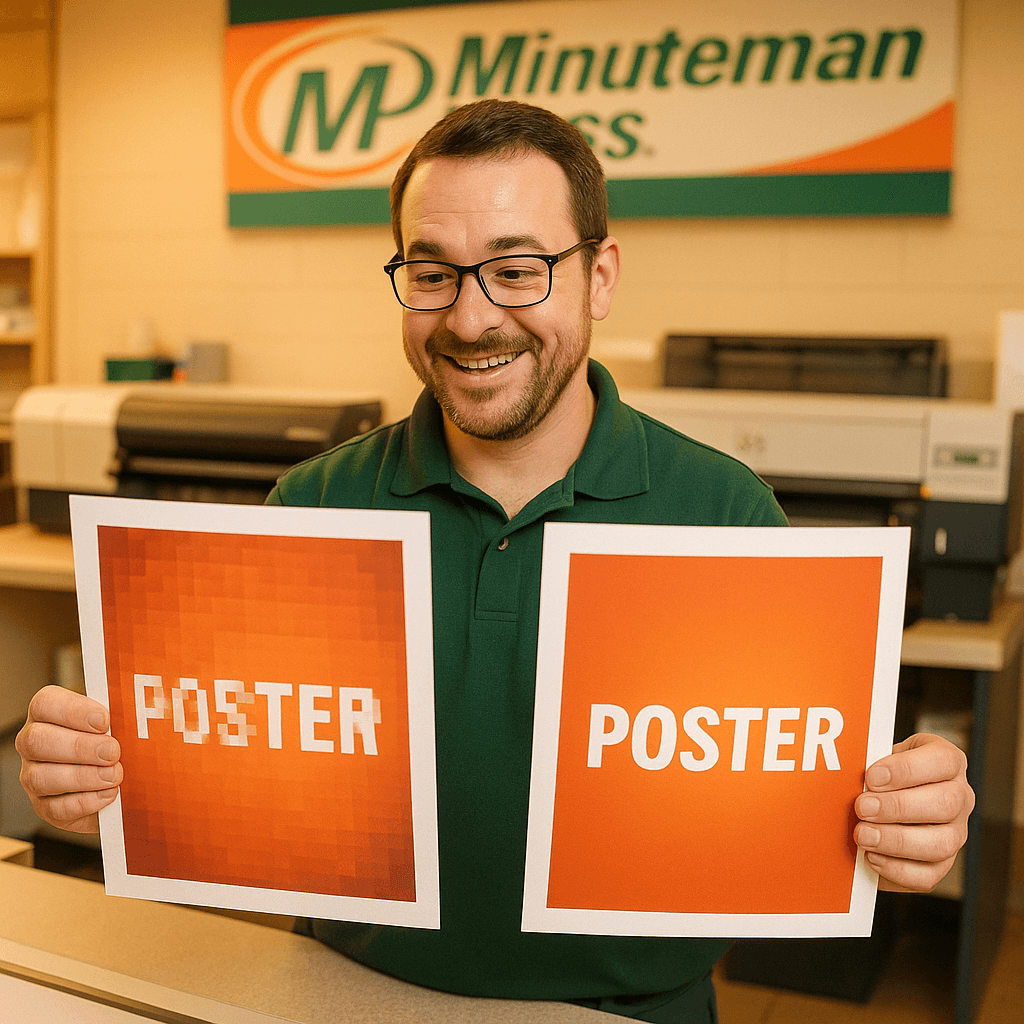
Image resolution determines whether your printed materials look professional or pixelated. Knowing how DPI (dots per inch) works ensures your photos, graphics, and designs print with crisp detail and accurate color. At Minuteman Press Boca Raton, we help you prepare every file to achieve the highest print quality.
What DPI Means in Printing
DPI measures how many tiny ink dots a printer places in one inch of paper. The higher the DPI, the more precise and detailed the printed image appears.
Low DPI (below 150) can cause grainy, blurred prints.
High DPI (150–300+) produces smoother color blends and sharper edges.
Printers translate pixels into physical dots. Each dot combines colors to recreate your digital design accurately. When an image lacks enough DPI, those dots become visible, and the print loses its professional look.
Recommended DPI Settings by Print Type
Different print products require different resolutions. Follow these simple guidelines to get reliable results:
150 DPI – Standard Print Quality
Best for:
Business cards
Brochures
Flyers
Small signage
150 DPI offers good clarity for compact prints viewed at close range. It balances quality with manageable file sizes.
300 DPI – Professional Print Quality
Best for:
Large banners
Posters
Trade show displays
High-detail photographs
300 DPI provides exceptional sharpness for larger prints or premium materials. It’s ideal when small text, gradients, or photography appear in your layout.
When to Use Higher DPI
Use 400 DPI or more when printing fine art, product packaging, or detailed photos that demand maximum precision. Higher DPI ensures no visible dots even under close inspection.
Why DPI Affects Print Quality
Proper resolution ensures your final print matches the quality seen on screen. A low-resolution image can make even the best design look unprofessional. High DPI, on the other hand, enhances:
Brand perception: Crisp materials reflect attention to detail.
Color accuracy: More dots mean smoother color gradients.
Durability: Prints remain sharp after lamination or coating.
Your printed materials are often the first impression customers get from your brand. Maintaining proper DPI shows commitment to quality and professionalism.
How Minuteman Press Boca Raton Ensures Print Accuracy
Every file we receive is checked before production. Our team verifies image resolution and layout alignment to prevent pixelation or cropping issues.
If an image appears low-resolution, we:
Use professional tools to enhance image sharpness.
Notify you if an image cannot meet print standards.
Recommend adjustments before printing begins.
This quality review guarantees that your project looks its best on every paper type and finish.
Tips for Preparing Your Files
To achieve the best results when submitting print files:
Use original high-resolution photos whenever possible.
Avoid enlarging small web images.
Save final designs in PDF format with embedded fonts and images.
Ask our team to check your file before printing.
Taking these steps ensures your artwork remains clear and accurate through every stage of production.
Conclusion
A professional print starts with proper DPI. Use 150 DPI for smaller prints and 300 DPI for banners or detailed images. If you’re unsure about your file quality, our team at Minuteman Press Boca Raton is ready to help you prepare every project for success.
Call 561-392-8626 or visit Get an Estimate to start your next print project.
